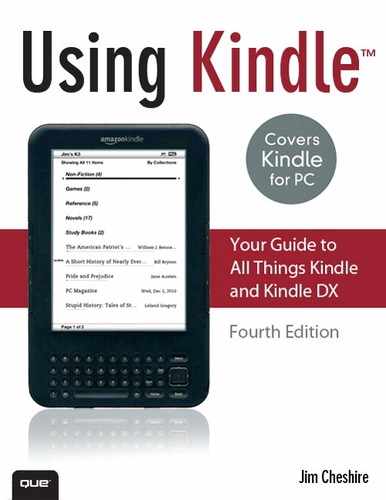Welcome to the Kindle
In November 2007, Amazon unveiled the Kindle to the world. Within a short amount of time, it became clear that Amazon had a huge hit on its hands. The Kindle sold out within a short amount of time, and for many months thereafter, Amazon had a tough time fulfilling orders for the new device. The huge demand for Kindles caught Amazon (and just about everyone else) completely by surprise.
Not everyone was pleased with Amazon’s first version of the Kindle, though. Some reviewers made fun of its angular appearance, and more still complained about the page turning buttons that were easily pressed accidentally. The Kindle community was wildly defensive of the original Kindle’s button placement, but if you handed one to someone unfamiliar with the device, moments later you’d discover your place in your book would be lost due to unintended page turns.
There were a few other complaints Amazon wanted to address in its first Kindle, and it did just that in February 2009 when it released the second generation Kindle. In October 2009, Amazon began shipping the Kindle internationally and added the capability to use Whispernet (the Kindle’s wireless service) in countries other than the United States.
In May 2009, Amazon announced the Kindle DX. In addition to all the Kindle’s features, the Kindle DX sports a larger screen (9.7″ versus the Kindle’s 6″ screen), and an accelerometer that makes it possible to view larger images in landscape mode by simply rotating the Kindle 90 degrees. (The Kindle can also rotate its screen, but you have to do so manually.) The original Kindle DX was followed by the second-generation DX in early 2010.
Note
The Kindle DX does not have international wireless capability. Only the Kindle with a 6-inch display is available for international use.
In middle of 2010, Amazon released the third-generation Kindles, the third-generation Kindle DX (commonly called the Kindle DX Graphite) and the third-generation 6-inch Kindle. The third generation offered a few tweaks to the hardware. The page turn buttons were made smaller and are now the only buttons on the side of the Kindle’s bezel. The 5-way controller (now referred to as simply the 5-way) was changed from a joystick style to a more familiar d-pad style. Other minor changes were made to the buttons on the Kindle. The third generations also sport a higher-contrast electronic ink screen using the new Pearl screen from E Ink Corporation, a display that gives the third-generation Kindles a 50% higher contrast than previous Kindles. Following are several other improvements in the third-generation Kindles:
• A faster processor for a snappier user interface.
• Upgraded power management and a bigger battery, thereby increasing battery life between charges.
• A Wi-Fi adapter for connectivity via wireless access points.
• Internal memory was doubled to 4GB.
• A smaller and lighter frame.
Perhaps the most popular change in the third-generation Kindle is the price tag. Amazon offers two versions of the 6-inch Kindle, one that is Wi-Fi only and is priced at $139 and one that includes Wi-Fi and a 3G modem (called Free 3G by Amazon) that connects via AT&T’s cellular network, priced at $189.
Note
After Barnes and Noble released the nook e-book reader, Amazon dropped the price of the second-generation Kindle to $189. However, it was previously priced from $259 to $359 dollars and enjoyed the lower price for only a short period before the third generation released.
This book consists entirely of information that is useful to all Kindle users. (However, if you’re an owner of the first Kindle version, you should read my book Decoding the Kindle instead of this book.)
In this book, you learn how to make the most of the Internet features in the Kindle. Not only do you learn how to use your Kindle for email with all the major email service providers, but you also learn how to use the Kindle’s Internet access to do many other useful things. Following are just a few of the things you can learn how to do with your Kindle:
• Check movies, show times, and even order tickets!
• Check flight status, airport delays, and gate information.
• Access traffic information and locate traffic hot spots.
• Find food and drink recipes complete with shopping lists.
• Bid on eBay auctions.
• Participate in social networks such as Facebook, LinkedIn, Bebo, and MySpace.
• View and manage your Netflix movie queue.
My publisher and I worked hard to ensure this book is the most comprehensive and useful guide available for the Kindle. After you read this book, you will feel more comfortable using every aspect of your Kindle. You can also discover the amazing versatility of the Kindle as you uncover a wide assortment of uses other than just reading content. It’s my sincere hope that reading this book kindles your love for this amazing device just as writing it did for me!
